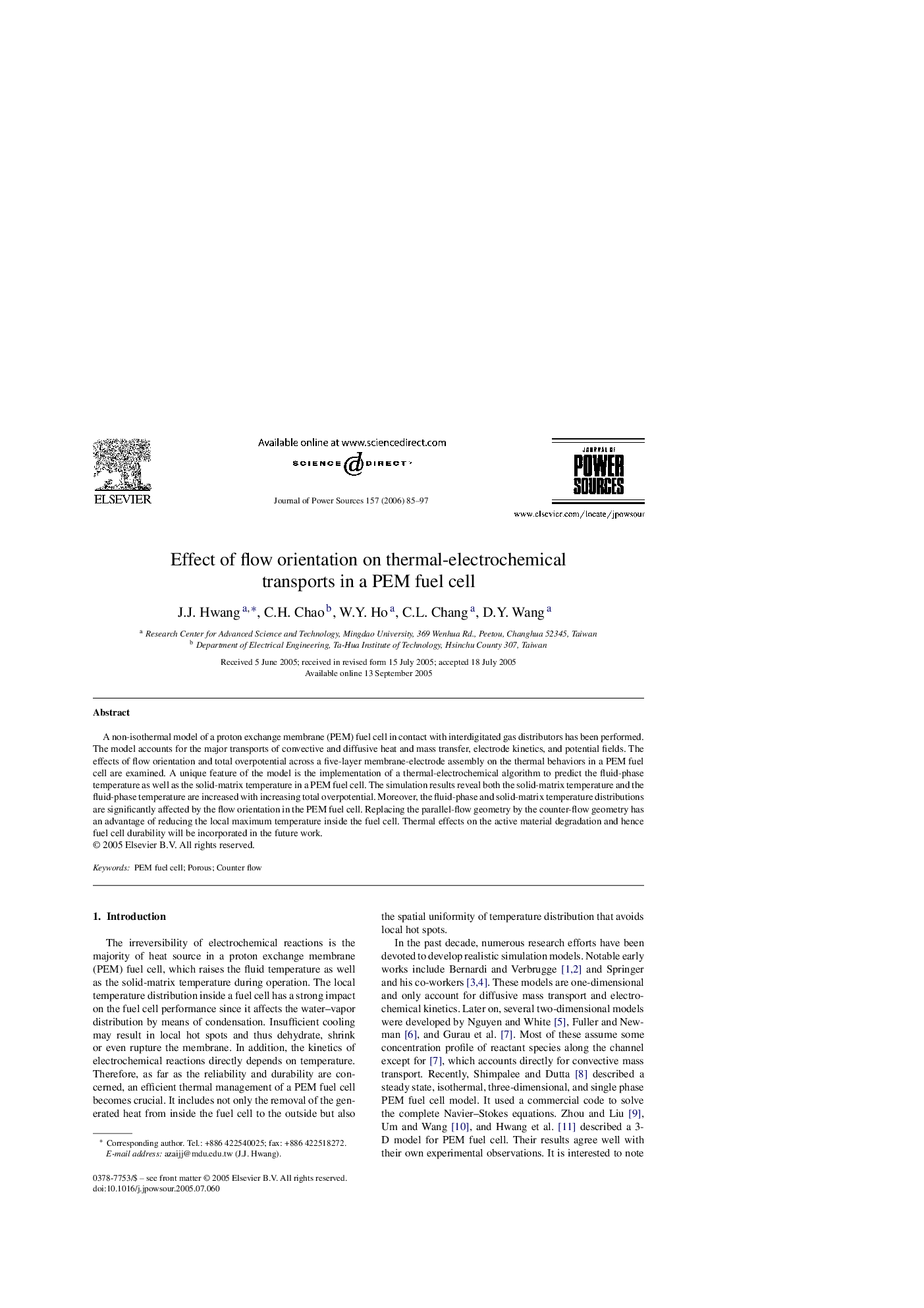| Article ID | Journal | Published Year | Pages | File Type |
|---|---|---|---|---|
| 1292649 | Journal of Power Sources | 2006 | 13 Pages |
A non-isothermal model of a proton exchange membrane (PEM) fuel cell in contact with interdigitated gas distributors has been performed. The model accounts for the major transports of convective and diffusive heat and mass transfer, electrode kinetics, and potential fields. The effects of flow orientation and total overpotential across a five-layer membrane-electrode assembly on the thermal behaviors in a PEM fuel cell are examined. A unique feature of the model is the implementation of a thermal-electrochemical algorithm to predict the fluid-phase temperature as well as the solid-matrix temperature in a PEM fuel cell. The simulation results reveal both the solid-matrix temperature and the fluid-phase temperature are increased with increasing total overpotential. Moreover, the fluid-phase and solid-matrix temperature distributions are significantly affected by the flow orientation in the PEM fuel cell. Replacing the parallel-flow geometry by the counter-flow geometry has an advantage of reducing the local maximum temperature inside the fuel cell. Thermal effects on the active material degradation and hence fuel cell durability will be incorporated in the future work.
